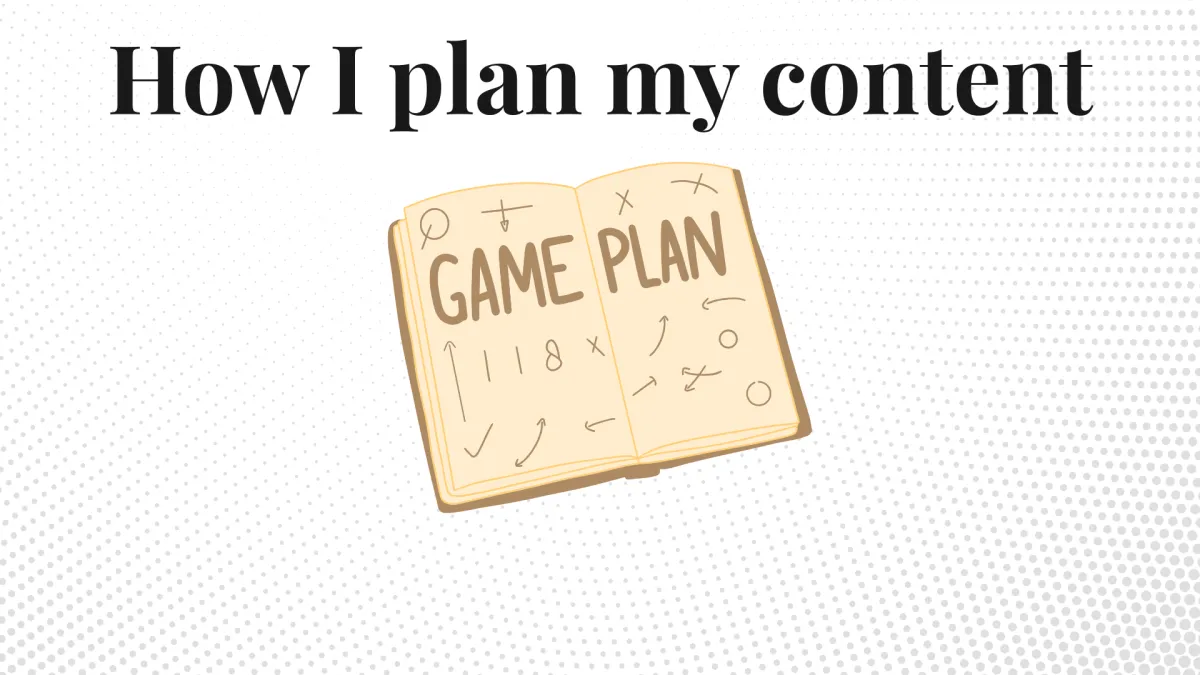
How I Plan My Content: A Step-by-Step Framework for High-Converting Marketing
Why Content Planning Matters More Than Writing
This past weekend, I reviewed my Q1 results and mapped out Q2. As I gear up for my next marketing campaign, I realized just how much my content planning process has transformed over the past two years.
After nearly a decade in the content marketing industry writing, editing, and strategizing I’ve learned one core truth:
👉 The biggest part of content creation happens before you start writing.
Here’s the exact framework I use to plan content that aligns with business goals and drives results.
The 6 Steps I Take Before Writing Content
1️⃣ High-Level Marketing Strategy
Your content should always tie back to your revenue growth goals. This strategy is typically mapped annually and forms the foundation for everything else.
2️⃣ Campaign-Specific Goals
Each campaign should serve a clear purpose whether that’s awareness, nurturing, or sales. I map these quarterly to stay focused.
3️⃣ Content Calendar
A high-converting calendar tells me exactly what to post and when. I update it monthly based on performance data.
4️⃣ Client Clarity Sheet
This is where I collect firsthand client and market insights. Nothing beats real conversations with your audience.
5️⃣ The Pick & Pair Process
This is my unique framework for pairing audience insights with proven content types. It ensures I’m posting what my audience needs to hear to take action.
6️⃣ Write the Content
By the time I sit down to write, the hard work is already done. Writing becomes easy, because I know what to say, why I’m saying it, and how it fits into my broader strategy.
The Evolution of My Content Process
Two years ago, I handled every step of this process manually. At the time, it was a huge time-saver compared to creating content reactively.
Today, I’ve integrated AI tools into my process to make it even more efficient.
What I Still Do Manually
✔ Market insight collection – because nothing replaces real conversations and client experiences.
✔ Strategy mapping – with years of industry experience, I can see angles AI might miss.
What I Use AI For
⚡ Drafting content – what used to take me a full day now takes about an hour. I act as the editor instead of the writer.
⚡ Brainstorming hooks and titles – AI helps generate variations so I can refine messaging faster.
AI isn’t replacing marketers it’s supporting us. Think of it as a tool that amplifies your expertise, not a competitor.
My Content Planning Workflow
Here’s a practical look at how I plan content step by step:
👉 High-Level Marketing Strategy (Annual)
Mapped at the end of each year for the following year, tied directly to business growth goals. This informs my campaign planning.
👉 Campaign-Specific Goals (Quarterly)
I define the primary focus for each quarter. For example: Right now, I’m in a visibility campaign, designed to put my brand in front of more people and gather data quickly.
👉 Content Calendar (Monthly)
Analyze last month’s results.
Set input vs. output goals (time spent vs. reach and conversions).
Generate topics using my Pick & Pair Process.
Batch create content in one focused workday.
This approach keeps me consistent while making content creation sustainable.
Key Takeaway
If you ever find yourself asking “What should I post?” that’s a sign you’re missing one (or more) of the steps before the writing stage.
Here’s the breakdown:
Marketing strategy = how to reach your overall goals.
Campaign goals = how to post the right things in the right order.
Client Clarity Sheet + Pick & Pair Process = what topics to write about.
Content calendar = what to post and when.
Once you’ve nailed steps 1-4, creating content ideas (and writing them) becomes a repeatable, streamlined process.
Final Thoughts
Content planning isn’t just about writing it’s about building a system that aligns strategy, insights, and execution.
When you set up the right frameworks, content creation becomes less overwhelming, more intentional, and far more effective at generating results.
So, how are you planning your content this quarter?
